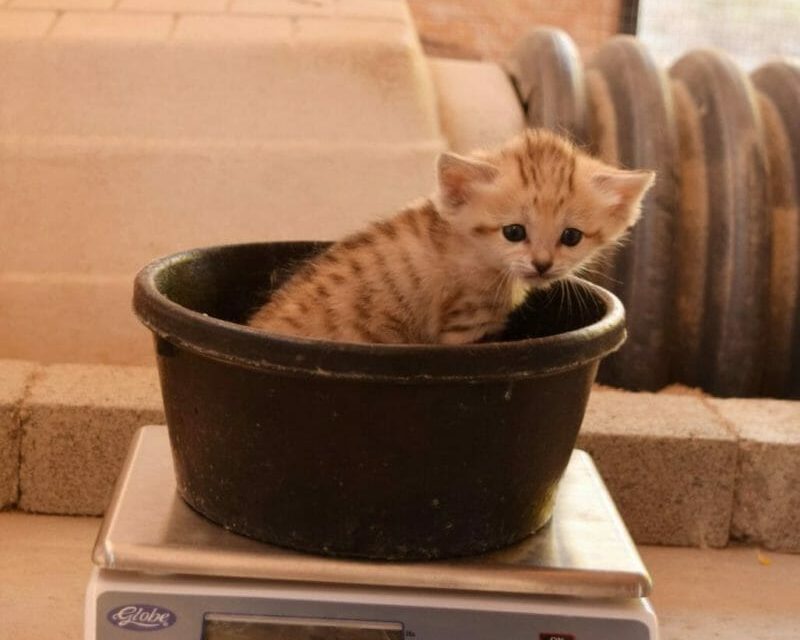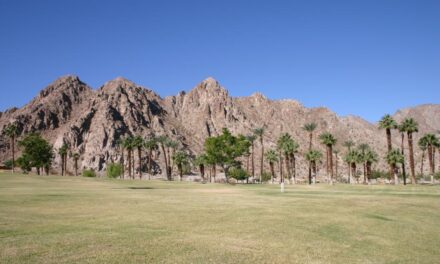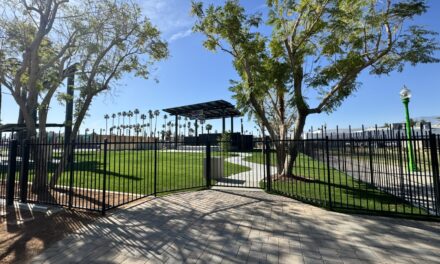PALM DESERT/INDIAN WELLS — For the first time since 2004, The Living Desert Zoo and Gardens has a sand cat birth. Four sand cat kittens were born. This is the inaugural birth in the Zoo’s Desert Carnivore Conservation Center.
The four kittens were born on March 25, 2019 to mother, Nadya, and father, Napoleon. Since their birth, the Zoo has been monitoring the kittens’ health and development through a webcam installed in their den box. On April 23, a well-baby exam was performed on the kittens and they are progressing as expected. The two male kittens and two female kittens each weigh about 300-340 grams (approximately 10-12 ounces).
“I’m thrilled with how the kittens are developing,” Dr. Andrea Goodnight, head veterinarian, said in a prepared statement. “They are becoming more adventurous each day and will soon begin exploring the areas outside their den box. Sand cat kittens are born with their eyes closed and weigh approximately one ounce at birth. At two weeks their eyes begin opening and by four weeks they have begun to walk and explore areas inside and near their den. By eight weeks they have weaned and are eating food and are independent from their mother.”
Sand cats are native to Northern Africa and southwestern and central Asia. They have thick fur that insulates them from the cold, heat, and blowing sand. Mostly solitary animals, except during breeding, sand cats have an average litter of four kittens.
“This is a historic birth for us,” RoxAnna Breitigan, Director of Animal Care at The Living Desert, said in a prepared statement. “Due to their very elusive nature and excellent desert camouflage, very little is known about sand cats, including their populations in the wild. We are proud to be participating in species conservation efforts that support these special felines.”
The Desert Carnivore Conservation Center was completed in March 2016 with the goal of expanding The Living Desert’s focused conservation efforts for small desert carnivores, more specifically small desert cats and foxes. The center is located behind-the-scenes, allowing the animals to have an undisturbed and quite area for breeding, which comes at the recommendation of the Species Survival Plans (SSP). The SSPs are cooperatively managed programs that ensures genetic and population sustainability.
“I am very excited to share this wonderful news,” said Allen Monroe, President/CEO. “The Desert Carnivore Conservation Center gives The Living Desert an opportunity to study the unique reproductive physiology of these animals to help support wild populations.”
The sand cats and their kittens will remain in the behind-the scenes Desert Carnivore Conservation Center.
The Zoo and Gardens is open daily from 9 a.m. to 5 p.m. through May 31. Summer hours begin June 1. For more information, click here or contact 760-346-5694.
Image Sources
- Sand Kitten: The Living Desert Zoo and Gardens







